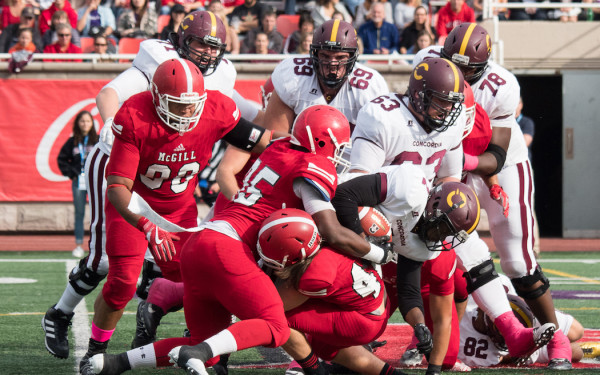Editorial: Blowing the Whistle on Locker Room Misogyny
Sport is seen as a way to bring people together, enhance social skills, improve physical condition and remain active. However, a con lies within, and a major culture shock is needed to curb it.
Athletes, often supercharged on aggression, machismo and adrenaline, feel superhuman, or at least above their opponents. Yet it becomes a problem when sport, namely its locker room culture, becomes a haven for gender denigration and violence.
In a study conducted by Pennsylvania State University in 2007, athletes in contact sports were found to be more likely to take part in violent acts outside of play. One sport took centre-stage in this study and, in light of recent events, is considered to be the most aggressive of them all: football.
Every week, new information seems to surface surrounding the infamous elevator fight involving National Football League running back Ray Rice and his wife in February.
And fellow NFL players Ray McDonald of the San Francisco 49ers, Greg Hardy of the Carolina Panthers and Jonathan Dwyer of the Arizona Cardinals have been busy fending off domestic abuse and assault charges of their own.
Ray Rice’s case has led to a disturbing revelation of past leniency in disciplining domestic abusers in the NFL. Only since Rice’s case made national headlines have harsher penalties been imposed on serious offenders.
Closer to home, McGill Redmen running back Luis-Andres Guimont-Mota is the latest to be arrested for alleged assault, and while details are still being released on his case, Guimont-Mota has already been convicted of assault for an incident in 2010.
College athletes in general have had their share of domestic troubles. A study from the National Coalition Against Violent Athletes revealed that male student athletes, who make up 3.3 per cent of the United States student population, make up 19 per cent of those convicted of sexual assault and 35 per cent of domestic violence perpetrators.
Sociologist Timothy Curry examined two “big-time college” locker rooms for an article, “Fraternal Bonding in the Locker Room: A Profeminist Analysis of Talk About Competition and Women.”
He studied their conversations and deduced that the players “treated women like objects,” “encouraged sexist attitudes toward women” and “promoted rape culture.”
The locker room is more than a place for athletes to simply hit the showers. It is a place for socialization and team bonding, yet teams must be aware there is a danger of enablers arising from athletics, whether collegiate or professional, and it doesn’t help that surrounding players have the opportunity to condone such behaviour.
Whether through their coaches, or team leaders, teams need to instill that it isn’t okay to view women as people who will willingly accept sexual advances after the big game.
Women don’t owe the quarterback, or the star power forward anything after a big night.
They don’t need to be submissive, and the players must realize it. While football players grab the most attention, and may often get in the most trouble, other athletes aren’t immune to this.
It’s up to coaches, athletic administrations and team leaders to ensure that players stay out of trouble.
It begins in the locker room.


_600_832_s.png)



__600_375_90_s_c1.jpg)